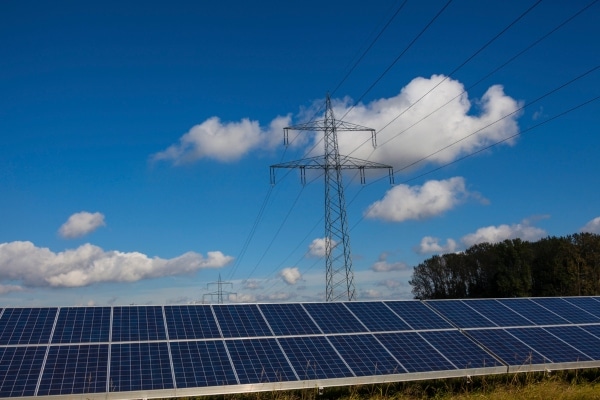Table of contents
How Net Metering is Ushering in the Clean Energy Future

Renewable energy has shifted how many of our households, corporations, and organizations produce and use power. Whereas the traditional model involves large, centralized power plants generating electricity and sending it to homes and businesses, renewable energy has turned it on its head. Families, municipalities, schools, and companies can use solar panels and wind turbines to produce electricity from on-site or remote locations.
Summary
- Net metering compensates utility customers with solar or wind systems for surplus clean energy supplied to the grid, promoting clean energy projects.
- Most states, including Illinois, offer net metering, compensating customers at the retail rate and fostering stable energy costs and climate.
- Transitioning from fossil fuel plants to distributed renewable energy and net metering significantly reduces energy expenses and promotes clean energy participation.
But what happens when these properties produce more than they are consuming at the moment and they don’t have storage batteries? Under net metering (also known as net energy metering), utility companies compensate these customers for the surplus clean energy they supply to the electrical grid.
Net metering policies enable utility customers to sell renewable power at a retail rate and receive credits on their energy bills. Then, these credits offset electricity consumption during other times of the day or year. As a result, net metering programs are critical for boosting the deployment of clean energy projects that lower carbon emissions and promote clean air. At Verde Solutions, a full-service energy consulting firm based in Chicago, we help our clients plan and implement such projects.
Most states have either mandated net-metering policies or have compensation programs other than net metering. Typically, utility customers with a solar energy system or wind turbines are merely charged for the net amount of electricity they consume.
In Illinois, residential and commercial ComEd, Ameren, and MidAmerican customers can participate in net metering. This program is called one-to-one net metering because it compensates utility customers at the same level they are charged. And this is the best arrangement for customers.
This program creates fantastic opportunities in our communities to take control of energy bills while helping to create a more stable climate. Although future energy expenses are somewhat unknown, we know they are moving in one direction, which is up.
Credits are carried over from month to month, but they expire once a year. Therefore, proper solar photovoltaic or wind energy system sizing is critical to maximize savings while avoiding expired credits.
At Verde Solutions, we understand the importance of renewable energy design in optimizing energy bill savings and boosting the return on investment of solar projects. We use state-of-the-art planning tools to align projects with our client’s financial and sustainability goals. In addition, we have extensive experience working with renewable energy incentive programs to reduce costs and with utility companies and AHJs for permitting and grid interconnection. Cooperation and understanding the utilities is essential, and Verde’s experience plays a huge role in the consistent success of our client’s solar projects.
Although net metering approval in Illinois is pretty straightforward for residential systems, it can be more complicated for larger commercial applications. For example, utility equipment upgrades might be necessary to enable the utility grid to handle the surplus power. Therefore, working closely with utility companies is critical for successful projects.
The way that our homes, businesses, and organizations consume power is shifting. We no longer have to purchase electricity from large fossil fuel power plants. Instead, distributed renewable energy systems and net metering programs enable us to join the clean energy movement and dramatically lower energy expenses for decades.

